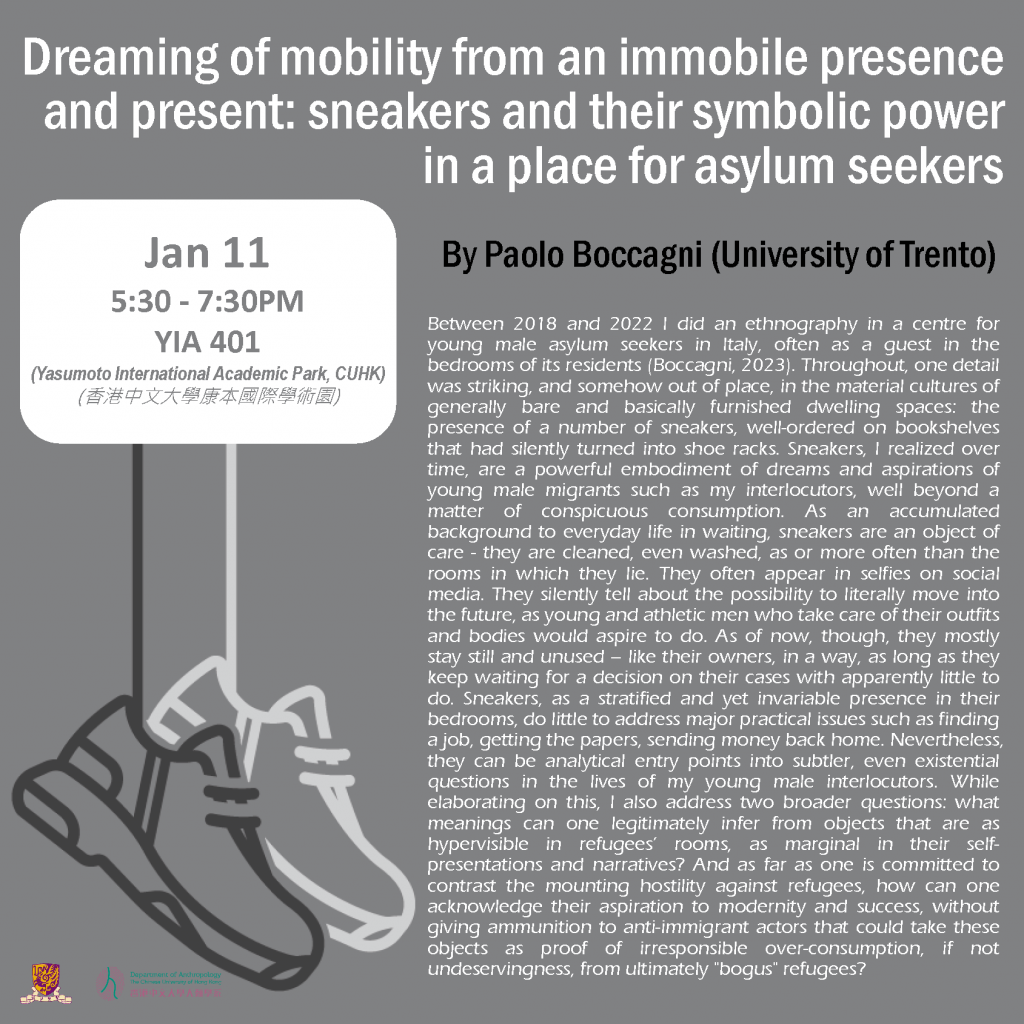
[Anthropology Department Social Impact Series]
Dreaming of mobility from an immobile presence and present:
sneakers and their symbolic power in a place for asylum seekers
Speaker: Paolo Boccagni (University of Trento)
Discussant: Gordon Mathews (The Chinese University of Hong Kong)
Date: 11 Jan 2023 (Thursday)
Time: 5:30-7:30 pm
Venue: Room 401, Yasumoto International Academic Park, The Chinese University of Hong Kong
Between 2018 and 2022 I did an ethnography in a centre for young male asylum seekers in Italy, often as a guest in the bedrooms of its residents (Boccagni, 2023). Throughout, one detail was striking, and somehow out of place, in the material cultures of generally bare and basically furnished dwelling spaces: the presence of a number of sneakers, well-ordered on bookshelves that had silently turned into shoe racks. Sneakers, I realized over time, are a powerful embodiment of dreams and aspirations of young male migrants such as my interlocutors, well beyond a matter of conspicuous consumption. As an accumulated background to everyday life in waiting, sneakers are an object of care – they are cleaned, even washed, as or more often than the rooms in which they lie. They often appear in selfies on social media. They silently tell about the possibility to literally move into the future, as young and athletic men who take care of their outfits and bodies would aspire to do. As of now, though, they mostly stay still and unused – like their owners, in a way, as long as they keep waiting for a decision on their cases with apparently little to do. Sneakers, as a stratified and yet invariable presence in their bedrooms, do little to address major practical issues such as finding a job, getting the papers, sending money back home. Nevertheless, they can be analytical entry points into subtler, even existential questions in the lives of my young male interlocutors. While elaborating on this, I also address two broader questions: what meanings can one legitimately infer from objects that are as hypervisible in refugees’ rooms, as marginal in their self-presentations and narratives? And as far as one is committed to contrast the mounting hostility against refugees, how can one acknowledge their aspiration to modernity and success, without giving ammunition to anti-immigrant actors that could take these objects as proof of irresponsible over-consumption, if not undeservingness, from ultimately “bogus” refugees?
All interested are welcome!

